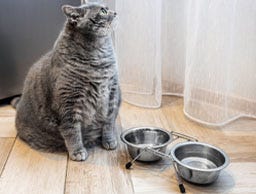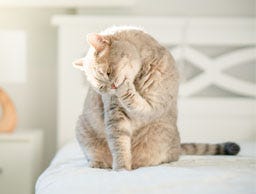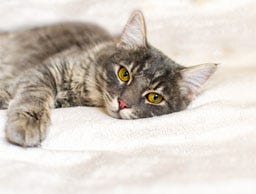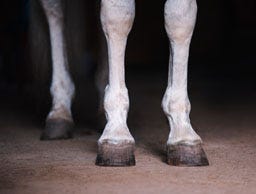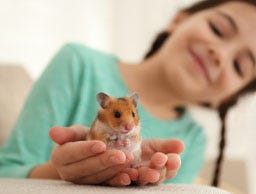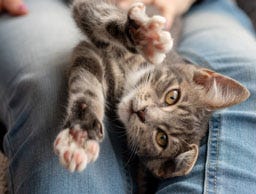Overgrooming in Cats
One of the key characteristics of cats is how they keep themselves clean by constantly licking themselves, but did you know there’s more to it than just being clean? Self-grooming is a behaviour instilled in cats by their mothers when they are young, and can actually help them to:
- Regulate their body temperature
- Clean and smooth their coat by distributing natural oils
- Stimulate circulation
- Prevent hairballs
- Self-soothe
In fact, as kittens, cats need their mothers to lick them to help them go to the bathroom, as they cannot do so by themselves until they’re older. With that in mind, it shouldn’t be too much of a surprise for your cat t spend a long time licking themselves, but when does it become too much?
What is Overgrooming?
Overgrooming is the term given to the compulsive grooming behaviour shown in some cats whereby their grooming habits begin to be problematic for their own well-being. This excessive licking can lead to skin inflammation and hair loss if not properly handled.
Symptoms of Overgrooming in Cats
Studies have shown that cats spend from 30-50% of their waking hours licking themselves, which can make it hard to determine whether your cat is overgrooming or if they are displaying natural grooming and hygiene behaviours. That said, if your cat is overgrooming, there will be other symptoms, such as:
- Inflamed skin
- Sores
- Hair loss
- Clumps of fur in the home
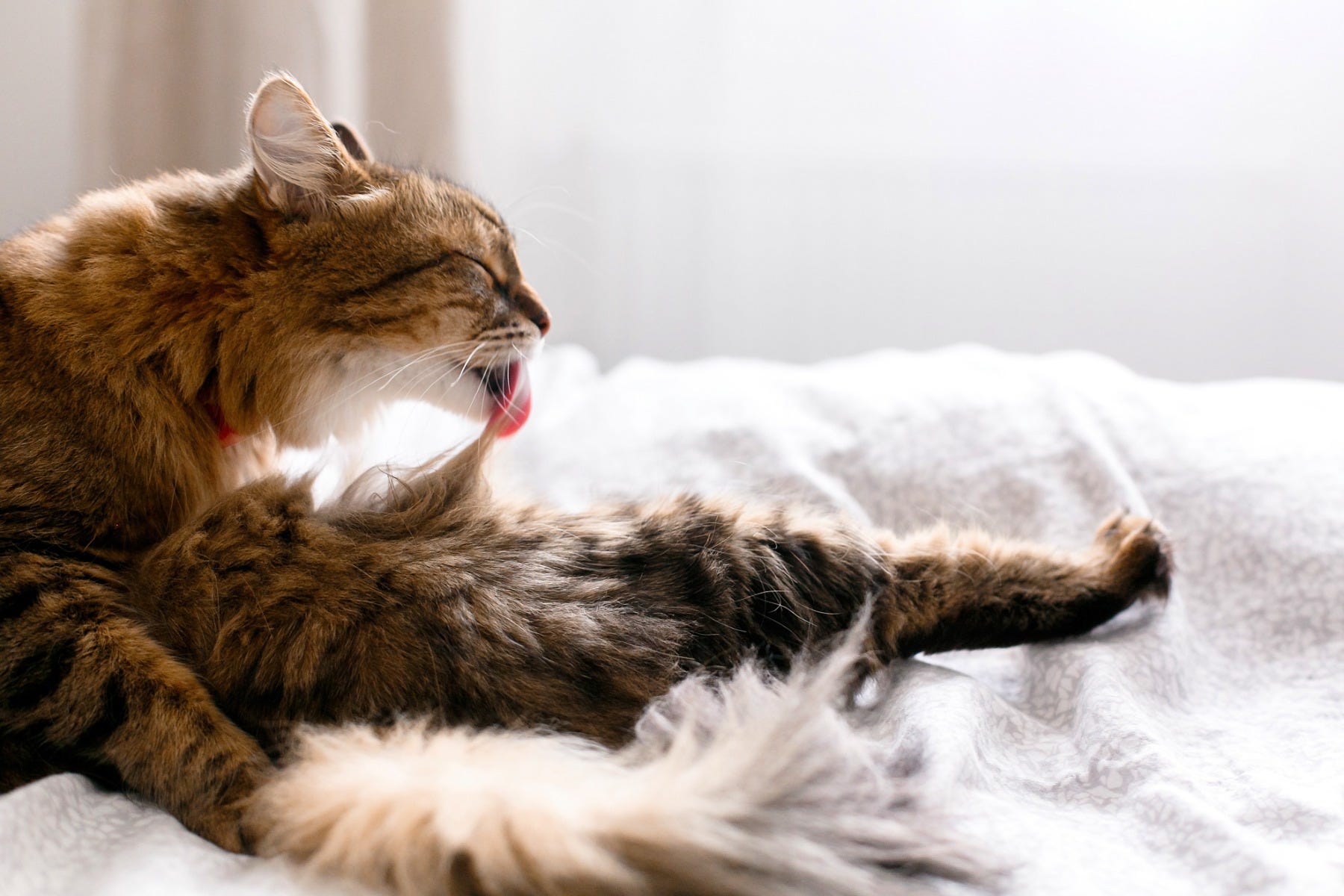
Why is My Cat Overgrooming?
Once you notice your cat is overgrooming, it’s important to try and find the root cause to understand better how to help. Some of the most common reasons for overgrooming in cats include:
- Flea or parasite infections
- Stress
- Food allergies
- Skin irritation
- Boredom
Sometimes the place where your cat is overgrooming can also be indicative of what’s wrong, such as an injury they’re trying to clean or something else.
Cat Overgrooming Back Legs
One of the most common places you’ll notice your cat has been overgrooming is on their hind legs, especially if they’re a short-haired breed. The reason behind your cat overgrooming their back legs is as varied as it would be for anywhere else on your cat’s body but typically points to stress or a skin condition.
Cat Overgrooming Base of Tail
The fur at the base of your cat’s tail is one of the prime spots you’ll find fleas if your cat’s suffering from an infestation. If your cat is overgrooming the base of their tail, this could be a sign of a flea infestation. If you can, part your cat’s fur and look closely for any signs of flea or flea dirt (small red-brown specks).
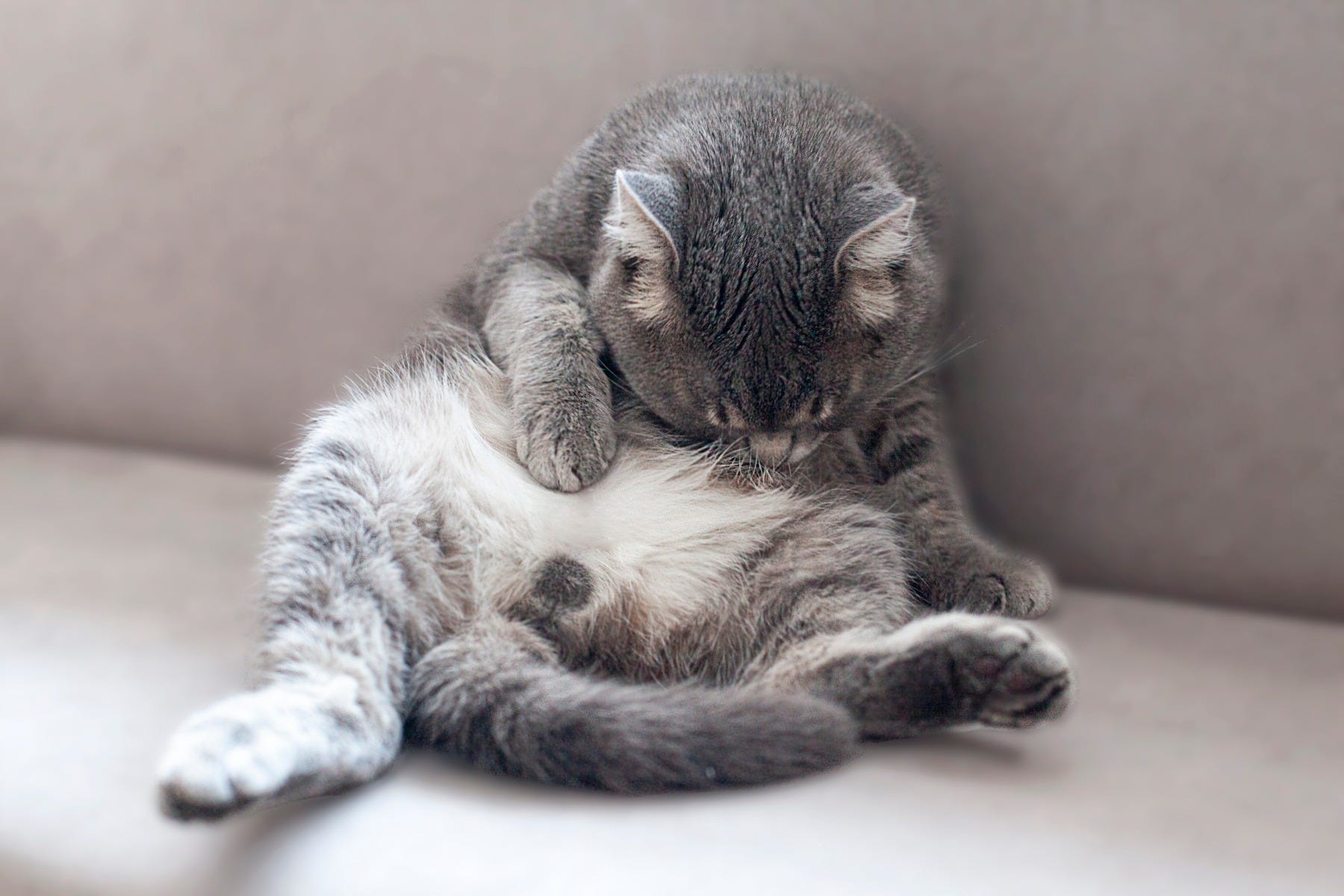
Cat Overgrooming Belly
Another common place for your cat to overgroom is their belly fur. While this can be a sign of stress and boredom, much like other grooming, if your cat is overgrooming their belly, it could also be a sign of something more serious happening inside your cat that is causing them pain. Cats sometimes groom themselves as a way to self-soothe, much like how their mothers licked them when they were kittens. If your cat is overgrooming their belly, it could indicate a more serious condition like a bladder infection or feline hyperesthesia syndrome.
If you notice your cat has begun to overgroom, no matter where it is on their body, make sure to consult your vet as soon as possible to find the root cause and work out a treatment plan.
How to Stop Your Cat Overgrooming
How you stop your cat from overgrooming will depend on why they started doing so, but here are some tips for stopping [your cat from overgrooming themselves.
Flea Infestation
If your cat has fleas, they may be over-grooming to try and remove them from their fur. By administering a flea treatment for cats, you can be sure your cat is free and protected from biting parasites like fleas, lice and ticks.
Food Allergy
If your cat is overgrooming in response to an allergic reaction to their food or some other external reason, then the first thing you need to do is find out what is causing their allergic reaction. Once this is removed from their environment, your cat’s symptoms should begin to ease before going away entirely.
If you want to offer your cat some relief in the meantime, there is a range of cat allergy treatments available without a prescription which can soothe your cat’s itching skin and, hopefully, their excessive licking too.
Stress
Cats are creatures of habit and like to stick to their routines. Upsetting this can quickly cause your cat to become stressed, and they may turn to over-grooming themselves as a self-soothing measure.
The easiest way to ease your cat’s stress is to remove the cause of it. When moving home or making other changes to your cat’s environment that can’t be avoided, a range of cat stress relief options are available.
It’s important to be vigilant regarding your cat’s behaviour, as any changes may indicate something is wrong. If your cat is overgrooming and you can’t figure out why, consult with your vet as soon as possible for a professional diagnosis and get your cat feeling like their old self again in no time.
This post is an opinion and should only be used as a guide. You should discuss any change to your pet’s care or lifestyle thoroughly with your vet before starting any program or treatment.













